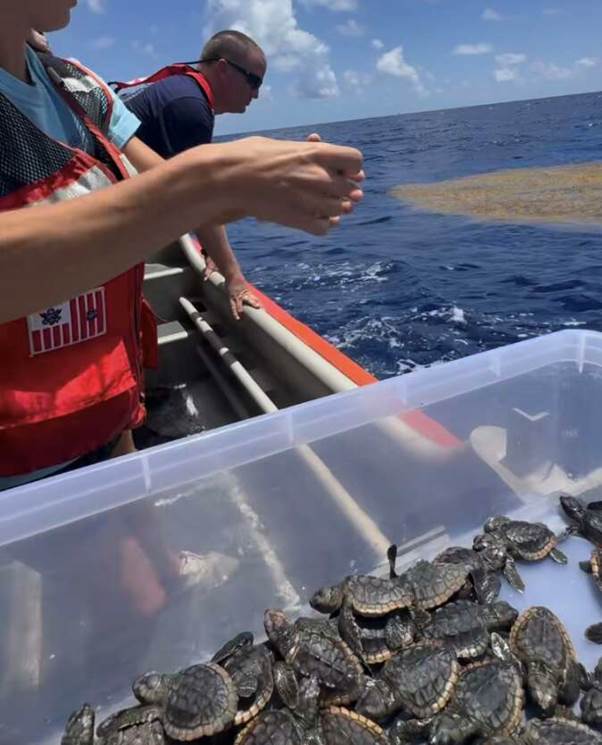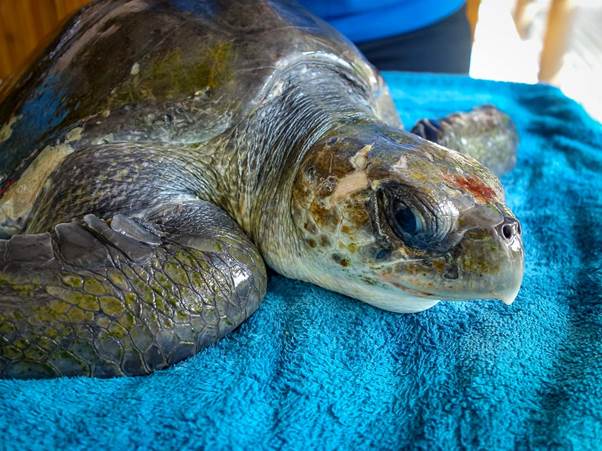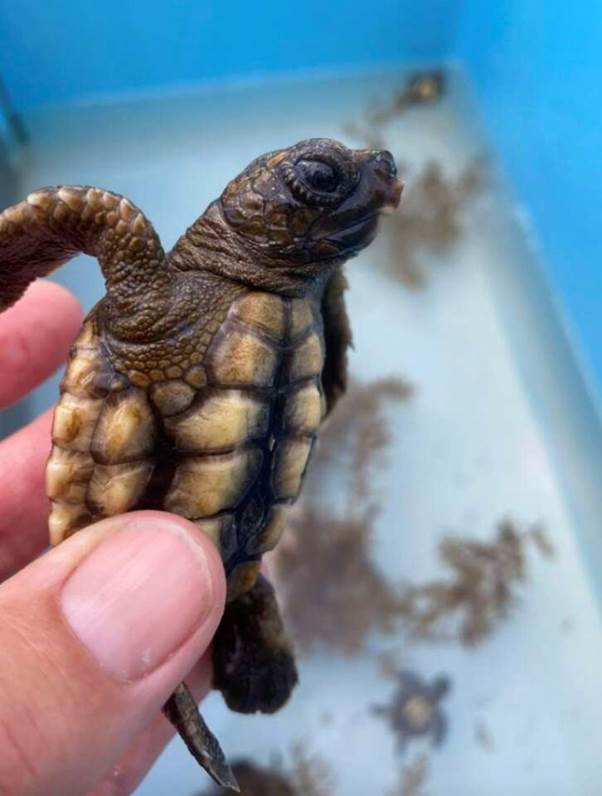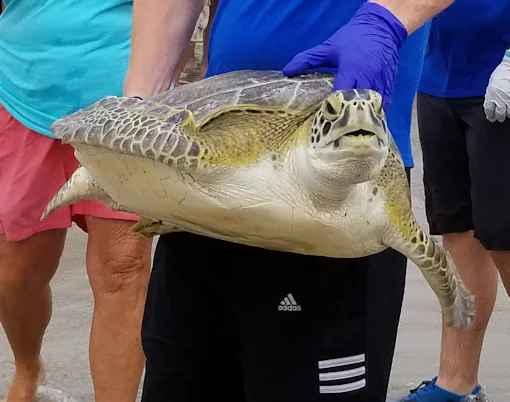
A Wrong Turn in the Darkness
The beach at night is a world of soft sounds and silver light, a place where the gentle rhythm of the waves is supposed to guide the oldest of instincts. For baby sea turtles, or “hatchlings,” the moon’s reflection on the water is a celestial road sign, a beacon that has guided their kind to the safety of the ocean for millions of years. But on a recent night in Florida, that ancient map was scrambled, leading to a quiet and desperate crisis.
A tourist, enjoying a peaceful late-night stroll along the shore, noticed something unusual. Far from the water’s edge, well over a hundred feet from the life-giving waves, there was movement in the high grasses. It wasn’t one or two creatures, but dozens of tiny, dark shapes, wandering aimlessly, their little flippers churning against the sand and weeds. They were baby loggerhead sea turtles, and they were going the wrong way.
Instead of being drawn to the sea, they had fallen victim to a dangerous modern phenomenon: lighting disorientation. The bright, artificial lights from coastal homes and businesses had become a false moon, a treacherous lure that had tricked the hatchlings, pulling them away from the ocean and into the perilous world of land. Lost, exhausted, and hopelessly confused, they were in grave danger.

A Midnight Rescue Mission
Realizing the severity of the situation, the woman immediately called The Turtle Hospital’s 24-hour stranding hotline. A team of dedicated rescuers was dispatched, arriving on the scene to find the scattered group of disoriented babies. With gentle, practiced hands, they began the delicate task of gathering the tiny, lost souls.
One by one, they carefully collected over 60 hatchlings, placing them into a bucket for safe transport back to their rescue center. Each one was a tiny miracle of survival, a perfect, miniature reptile whose life had taken a dangerous detour just moments after it had begun. Back at the hospital, the team’s expert care went into full swing. This was not just about getting them to the water; it was about giving them the best possible chance to survive their first, crucial hours of life.
Every single turtle was given a thorough physical exam. They were weighed—each one just a few precious ounces—and the sand was gently rinsed from their eyes. They were given fluids to combat dehydration from their long, arduous journey in the wrong direction. Finally, they were placed in a special tank for a “swim test,” a chance for them to regain their strength and prove they were ready for the vastness of the ocean.

A Return to the Waves
After their brief period of rehabilitation, the time came for the happy ending everyone had been working toward. The team carefully transported the 61 healthy babies back to a dark, quiet stretch of beach, far from the confusing glare of artificial lights.
There, under the guidance of the true moon, they were released. It was a beautiful and hopeful sight as the tiny turtles, their ancient instincts now reoriented, instinctively turned toward the sound and scent of the sea. They crawled across the sand, a determined little army on a mission, until the gentle waves of the Atlantic finally washed over them, carrying them home.
A few of the hatchlings, the weaker ones who needed a little more time, remained at the hospital. There, they will continue to receive dedicated care, growing stronger each day until they, too, are ready to be reunited with the ocean.

A Plea for the Future
This incredible rescue is a heartwarming story, but it is also a powerful reminder of the responsibility we have to protect these beloved and vulnerable creatures.
“All species of sea turtles in and around the USA are threatened or endangered, meaning they are at risk of becoming extinct in our lifetime,” Bette Zirkelbach, the general manager of The Turtle Hospital, explained. The survival of every single hatchling is critical to the future of the species.
The single most important thing coastal communities can do is to minimize artificial lighting during sea turtle nesting season. Keeping lights off, closing blinds, and using special “turtle-safe” bulbs can prevent the deadly disorientation that led these 61 babies astray. If everyone does their part, these ancient mariners won’t be fooled. They will follow the moon, find their way to the waves, and continue to grace our oceans for generations to come.


